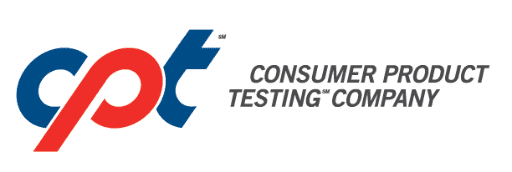Regulatory Status of Cosmetics and Important Legal Concepts
The Federal Food Drug and Cosmetic (FD&C) Act defines “cosmetic” products by their intended use, as “articles intended to be rubbed, poured, sprinkled, or sprayed on, introduced into, or otherwise applied to the human body…for cleansing, beautifying, promoting attractiveness, or altering the appearance.” By contrast, a “drug” is defined as being intended for a therapeutic use such as treating or preventing disease, or to affect the structure or function of the body.
Federal law does not require cosmetic products or their ingredients, other than color additives, to be approved by FDA prior to their introduction into interstate commerce. FDA regulates cosmetics under the authority of the FD&C Act and the Fair Packaging and Labeling Act (FPLA). The FD&C Act prohibits the marketing of adulterated or misbranded cosmetics.
Adulteration refers to violations involving product composition. Examples include, but are not limited to, products containing poisons or other filthy, putrid, decomposing or otherwise deleterious substances, or products which have been prepared, packed or held under unsanitary conditions whereby they may have become contaminated or rendered injurious to health.
Misbranding refers to violations involving improperly labeled or deceptively packaged products. Examples include but are not limited to labeling that is false or misleading, labeling that does not include required information, product containers that are made, formed or filled as to be misleading, or products containing a color additive that does not conform with regulations under the FD&C Act.
Companies and individuals who market cosmetics have a legal responsibility to ensure the safety of their products and that they are neither adulterated nor misbranded.

Ensuring the Safety of Cosmetic Products
Ensuring the safety of a cosmetic product is a complex endeavor, starting with assessments of the formulation. Does the product contain any ingredient(s) of concern based upon chemical attributes, how the product will be used, the area of the body, or the amount of time that the product will be in contact? Does any ingredient contain an objectionable contaminant (e.g., benzene), or can the ingredients within the formulation interact in a manner whereby dangerous contaminants are formed (e.g., nitrosamines or formaldehyde)? Is the product suitably preserved to prevent a proliferation of objectionable microorganisms during consumer usage? Can the product cause irritation or allergic reactions? Does the packaging present any safety issues relating to its physical structure or possible interaction with the product? These are but a few questions which must be addressed in assessing the safety of any cosmetic product prior to its launch.
Cosmetic Product Testing: Stability
There is no requirement for cosmetic products distributed in the US to undergo stability testing or be assigned expiration dates HOWEVER savvy cosmetic product owners conduct stability testing prior to launch so that they can correct any formulation, packaging or preservation issue(s) which may arise, thereby avoiding consumer complaints which are often reported directly to FDA.
Cosmetic Product Testing: Microbiology
Microbial contamination is one of the most common reasons why cosmetic products are recalled in the US. Microbial contamination is typically traced to one or more of the following sources: the use of a contaminated ingredient; environmental conditions and/or poor employee hygiene practices within the facility in which the product was manufactured; a product formulation having an inadequate preservative system. It is strongly recommended that microbiological testing be conducted for susceptible cosmetic ingredients, finished products, and in conjunction with stability assessments of each product. It is also recommended that the environment in which cosmetic products are manufactured be microbiologically monitored with regular frequency.
Labeling Claims on Cosmetic Products
Both FDA and the FTC (Federal Trade Commission) regularly monitor cosmetic labeling claims for compliance with current regulations. Keep in mind that statements which appear on product packaging, advertisements, materials posted in the vicinity where products are offered for sale, and statements appearing on social media are all considered “labeling claims.” Both agencies scrutinize all forms of cosmetic labeling for incidents of “misbranding” including the use of claims that are reserved for drug products.
The 7 Most Common Pitfalls Encountered When Launching a Cosmetic Product
- Failure to assess each ingredient for concerns relating to its chemical attributes, possible contaminants it may contain, and possible interactions it may enter into with other ingredients in the formulation.
- Failure to assess the product preservative system, taking consumer usage into account.
- Failure to conduct suitable safety testing so as to determine the product’s potential for eliciting irritation and/or allergic reactions.
- Failure to conduct stability testing so as to identify formulation, packaging and formulation/packaging compatibility issues prior to launch.
- Failure to ensure that the product is manufactured, packaged and held under conditions that will not promote contamination or product/package deterioration.
- Failure to conduct suitable testing to support labeling claims made for the product.
- Failure to assess the legality of labeling claims made for the product.
The Successful Launch of a New Cosmetic Product
The “successful” launch of a new cosmetic product is one that meets all regulatory/legal requirements, is conducted in the most cost-effective manner, and is completed in the shortest amount of time. The only way to achieve a successful launch is to acquire the necessary knowledge and to use that knowledge to plan and coordinate all required launch activities in the most efficient manner.
How can CPT Assist in the Successful Launch of Your Cosmetic Product?
When it comes to launching a new cosmetic product for US distribution, CPT can provide expert Regulatory consulting services and testing assistance every step of the way. Our Clinical, Microbiology, Analytical Chemistry and In Vitro Toxicology Laboratories is staffed by seasoned professionals employing state-of-the-art testing equipment and the most current methodologies, all under one roof and ready to assist with all of your planning and testing needs.
Let us help you to avoid the common pitfalls in launching a new cosmetic product. Think of us as your launch team partner and also your FDA-registered and ISO/IEC 17025 accredited testing expert. Why not give us a call today so that we can begin to assist with your cosmetic launch plans?

